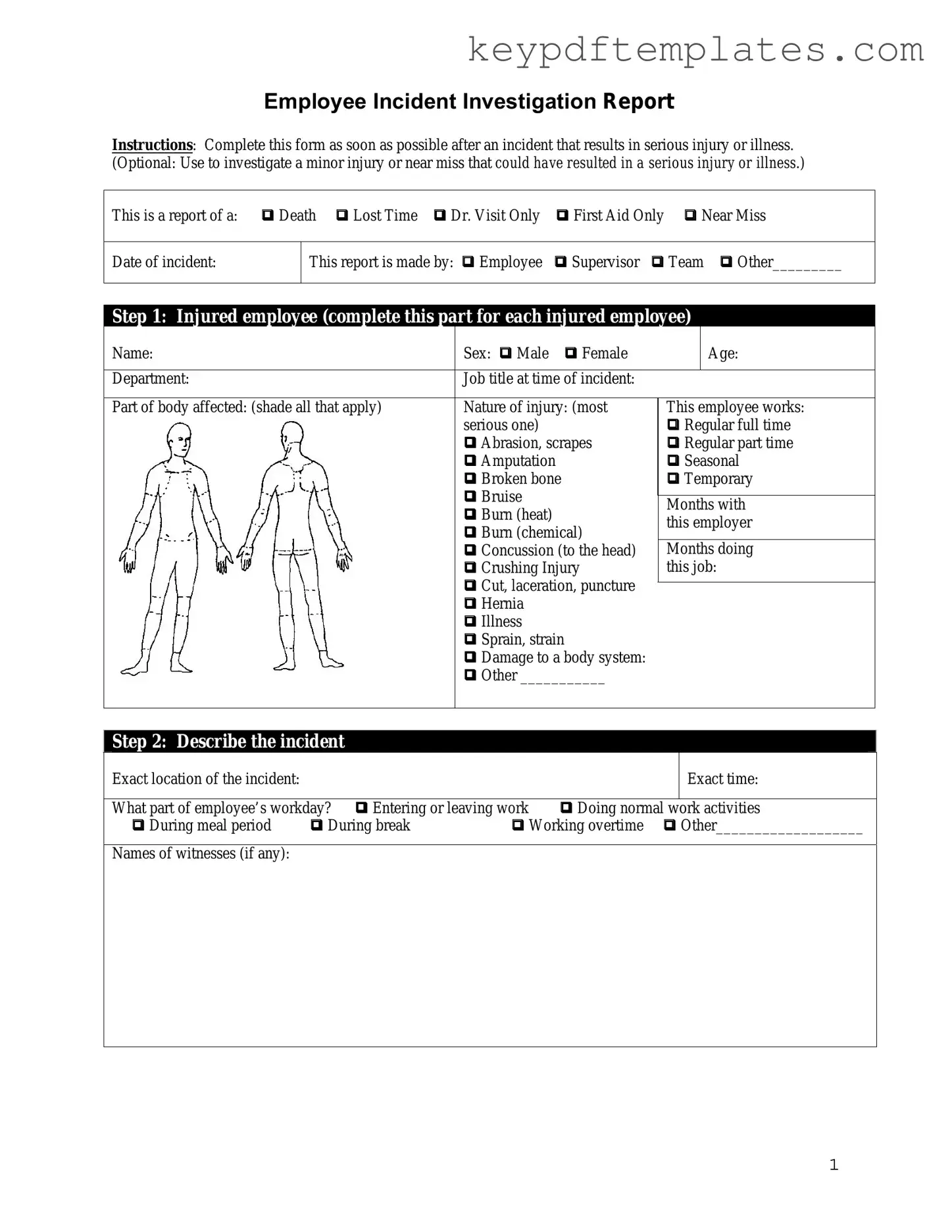Get Employee Accident Report Form
The Employee Accident Report form is a crucial document used to record details about workplace incidents involving employees. This form helps employers understand the circumstances surrounding the accident, ensuring that appropriate measures can be taken to prevent future occurrences. By accurately documenting these events, organizations can promote a safer work environment for everyone.
Modify Document Online
